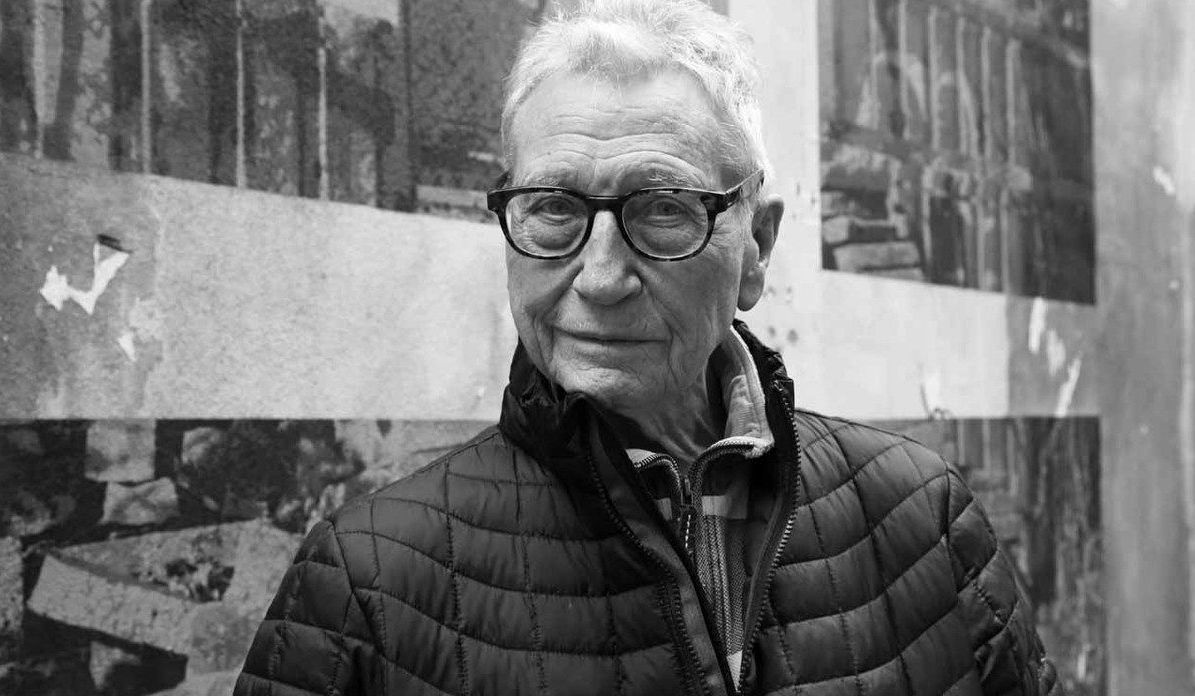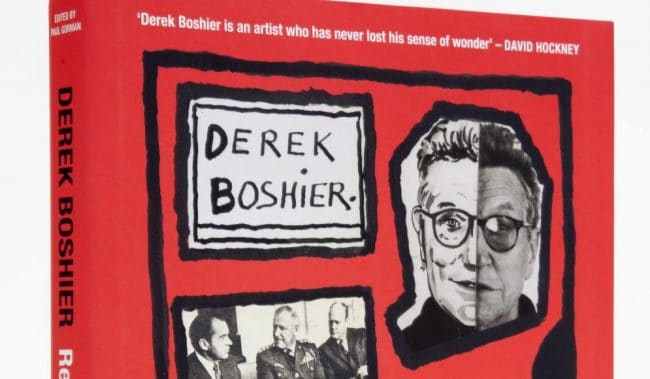Derek Boshier, you were a key member of the early Pop Art movement in the UK. That must have been an exciting time to be a young artist at the Royal College of Art?
The Royal College of Art class of 1959 – 62 was perhaps to do with being at the right place at the right time. The generation before with Richard Hamilton’s This is Tomorrow set the critical / theoretical agenda. What the Royal College students did was to popularize the Pop Art movement via the changing British culture that morphed into swinging London later.
From the dreary post war 1950s Britain, most of the 59-62 Royal College of Art students were from working class backgrounds, Allen Jones, Peter Philips, David Hockney, Patrick Cauldfield and myself. Pauline Boty came from a middle class background.
One of your fellow students from the RCA, David Hockney, wrote the introduction to your 2015 Thames and Hudson book – Derek Boshier : Rethink/Re-entry, and has his own base in LA. Do you still keep in touch?
I see David of course as he lives in Los Angeles. Earlier this year he painted my portrait, although the last few months he has been living in Normandy.
You have always been interested in the infiltration of American life in to UK culture, and shown this in paintings like Special K. Do you think this interest influenced your decision to move permanently to Los Angeles?
Yes many of my 1961-62 Pop Art paintings where concerned with the infiltration of American culture on British culture. My time living in America was an expansion of what was initially a one semester visit as a visiting artist to the University of Houston in Texas. The semester turned into a 13 year Texas stay. I married and had two daughters in Houston.
My current living in Los Angeles for 22 years was the same continuation as I went to teach at CalArts for one year, then was asked to do a second year, and after leaving CalArts, stayed. The dilemmas politically an individual has to deal with in any country. Now with President Trump in America, and Prime Minister Johnson In Britain, earlier Mrs Thatcher and Reagan.
Has your view of American culture changed now that you more of an ‘insider’ living there, and if anything, what are the things you miss most about living in the UK?
As a British ex-patriot living in Los Angeles, yes of course I miss much about living abroad. As you can imagine, living from birth to aged 43 totally formed my persona. Living in America, I still feel totally British and miss friends, the British landscape, newspapers and culture generally.

Derek Boshier, Hans-Ulrich Obrist/ Serpentine Gallery
You collaborated with David Bowie, designing artwork for his albums: Lodger and Let’s Dance. How did you and David meet?
I met David Bowie as I was asked by the British Council to curate an exhibition at the Hayward Gallery in London. The exhibition was titled Lives (artists who use other people as the subject matter of their art). Meaning no abstract, landscape or performance artist who worked off of themselves etc. The exhibition tried to be inclusive of the then high art and low art.
As well as fine artists, there were photographers, video artists, graphic designers, an art therapist, an academic portrait painter, cultural photographers, which included Duffy; in my opinion the best photographer of the 1960s/70s. Soon after the exhibition ended, Duffy contacted me and said he had a friend who he felt sure I would get on with. The way he framed it, I thought the mentioned friend was female and a blind date. I met Duffy at his studio and then found it was David.
David, Duffy and I collaborated on the LP Lodger. Later I did portraits of David, him as The Elephant Man, designed stage sets and he over time, has become my best collector.
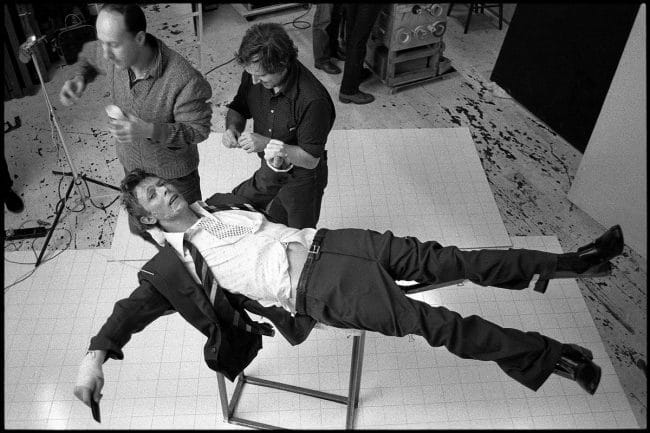
The Lodger, Special Effects, 1979 © Duffy Archive
As with Lodger, the falling man has often appeared in your work, where did the idea originate?
My use of falling figures came about initially through an project that was made mandatory as a student at the Royal College of Art for all painting students. We were told to take a famous classic painting and from it make a painting, from it but not a copy. David Hockney made a painting related to a Ford Maddox Brown painting: The Last of England. I made a painting from William Blake’s The Simoniac Pope ( Pope Nicholas III going to hell, illustration for the Divine Comedy ).
This falling figure I began using in my 1962 Pop Art painting as a symbol of vulnerability. I am only conjecturing but I think David Bowie might have initially contacted me because of my use of the falling figure. Later David was in The Man Who Fell to Earth directed by Nicolas Roeg. David studied mime and I did to a lesser extent. He released his song Changes on the album Hunky Dory in 1971. I had exhibited in a solo Derek Boshier exhibition at the Whitechapel Gallery in 1973, a large installation: Change. Perhaps the above were reasons he contacted me? I had also as you know worked with The Clash.
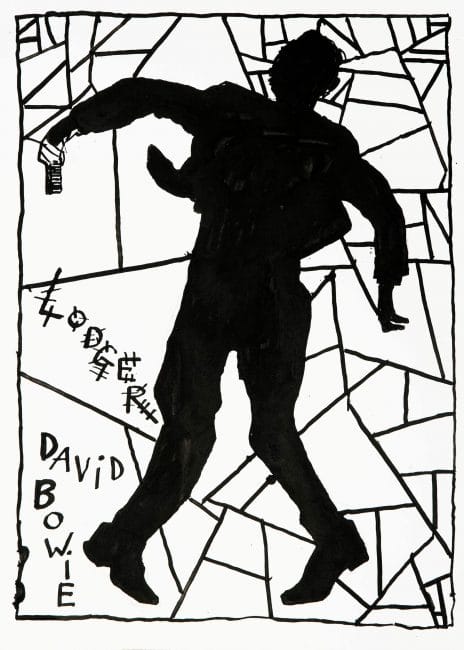
Derek Boshier, David Bowie
In the early 1970s, you moved away from painting to focus on other media such as photography, printmaking, books, collage and filmmaking. Was there anything in particular which influenced this change of direction, or was it more of a natural evolution i.e. just wanting to explore new, different types of media?
Yes in the early 1970s I gave up painting for 13 years to use media more conducive to the ideas I wanted to pursue. That is in new media, videos, newspapers and television. My work from Royal College of Art days to current work has always been from popular culture. An artist should always use the medium that is best suited to the idea.
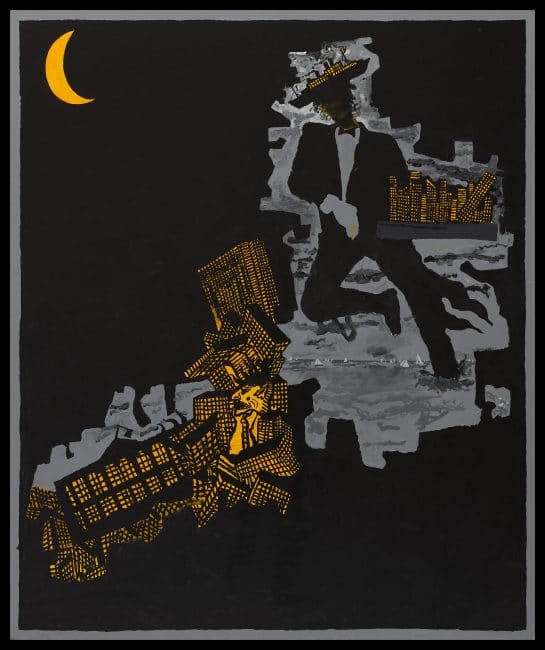
Night (Waiter Wader), 2019 Derek Boshier (Gazelli Art House)
Having made a number of short films, and living in LA the centre of the film industry, have you ever thought about getting involved in directing or producing independent feature films? (I’m just thinking about your fantastic ink on paper series Drawings From Film).
I made films in the late 1960s and early 1970s. Returning to filmmaking again in 2017. My last film was only recently completed: I Never Knew The World Was So Beautiful about a woman blind since birth, and at age 30 can see for the first time. It’s my first film that is more of a documentary.
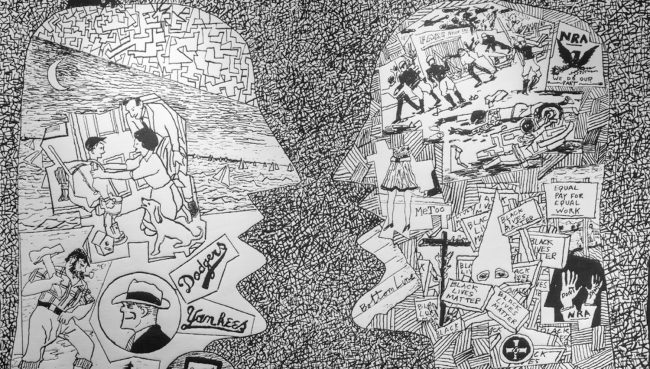
America, America, 2019 Derek Boshier (Gazelli Art House)
Derek Boshier: Night and Snow/Fragments: Contemporary Still Life has just finished at Gazelli Art House, London.
For further information please visit: www.derekboshier.com
Recommended reading: Derek Boshier : Rethink/Re-entry




